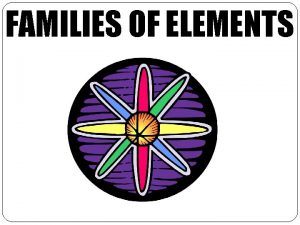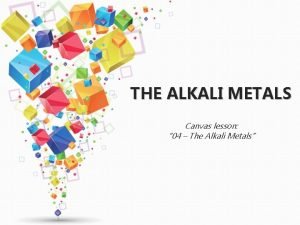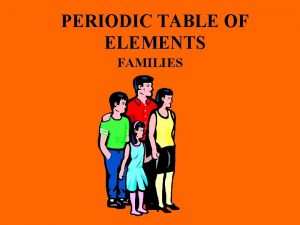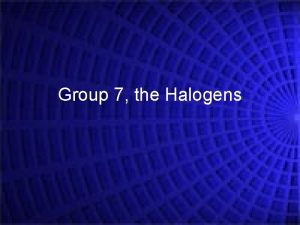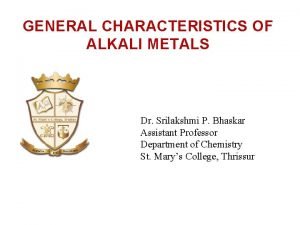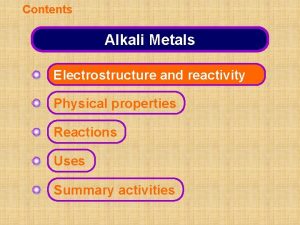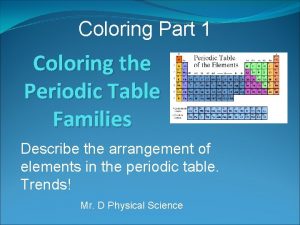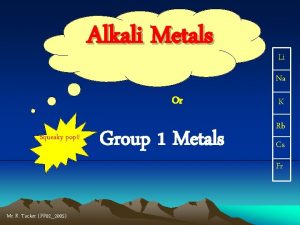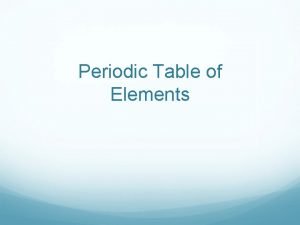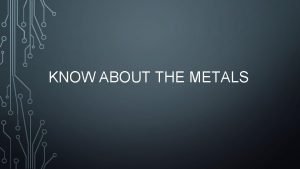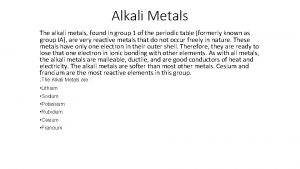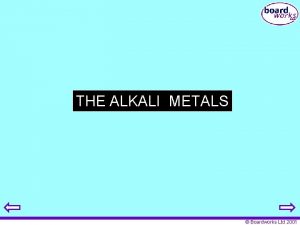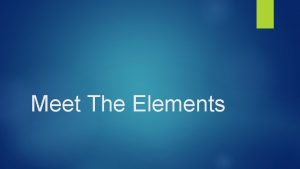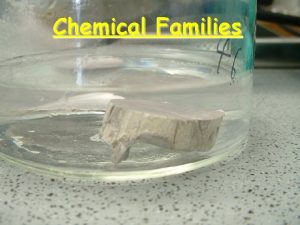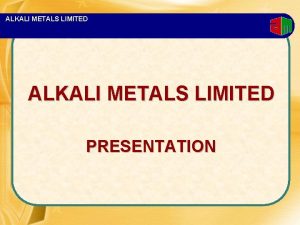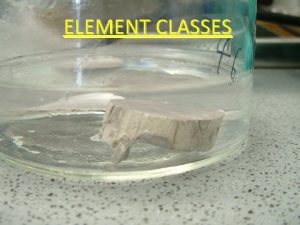Station 1 Alkali Metals Group 1 These metals








- Slides: 8

Station 1: Alkali Metals § Group 1 § These metals are very reactive. § Have 1 valence electron (same as the group #) § Shiny and silver in color § Density is extremely low – so they are soft enough to be cut with a knife § Low melting point § p. H greater than 7

Station 2: Alkaline Earth Metals § Group 2 § Slightly less reactive than alkali metals § Good conductors of electricity § 2 valence electrons (same as group #) § Silver in color § Denser than alkali metals § High melting point § High boiling point

Station 3: Transition Metals § Groups 3 -12 on the periodic table § Moderate reactivity and wide range of properties § Shiny § Good conductors of heat and electricity § Higher densities and melting point than group 1 and 2 § Malleable (can be flattened into sheets) § Ductile (can be pulled into wires)

Station 4: Post-Transition Metals § To the right of the transition metals and to the left of the metalloids § Referred to as “other” metals and “poor” metals § Malleable, ductile, and good conductors (like most metals) § High density § Lower melting point and boiling point than many transition metals

Station 5: Metalloids § On the stair-step § Properties of both metals and nonmetals § Useful in the semiconductor industry § Solid at room temperature § Can form alloys with other metals § Poorer conductor of heat and electricity than metals are

Station 6: Halogens § Group 17 § Nonmetals § Very reactive § Poor conductors of heat and electricity § Form salts when bonded with metals – this is why they are known as “salt formers” § Table salt = Na. Cl

Station 7: Noble Gases § Group 18 § Unreactive § Nonmetals § Colorless, odorless gases at room temperature

Station 8: Lanthanides and Actinides § Bottom two rows under the table § Also transition metals – were taken out and placed at the bottom of the table so the table wouldn’t be so wide § Lanthanides – shiny and reactive § Actinides – ALL radioactive therefore unstable § Elements 95 – 103 = manufactured in the lab (do not exist in nature)
